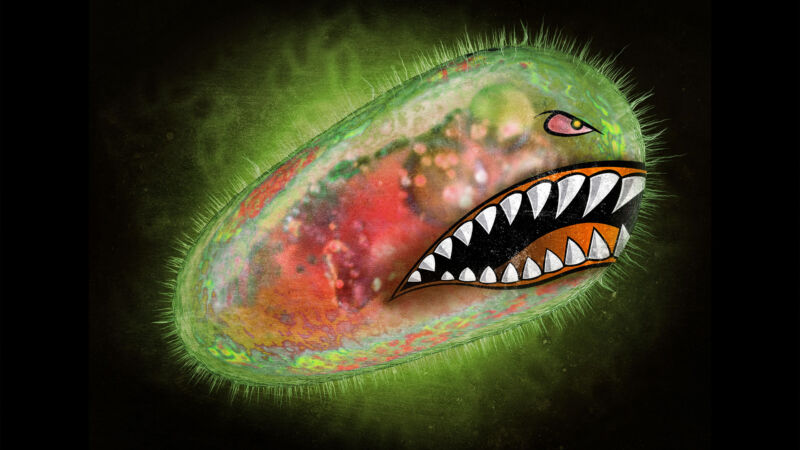Scientists discover a new supergroup of rare single-celled predators

Enlarge (credit: Aurich Lawson | Getty Images)
Back in the day, taxonomists had to characterize organisms based basically on how they looked. Molecular phylogeny changed that; once scientists could isolate and amplify DNA, they started classifying organisms based on their genetic sequences. But that still usually required that the organisms be cultured (and thus culturable) in a lab.
High-throughput sequencing technology relieved that constraint. Now researchers can basically throw a drop of pus, pee, or pond water into a DNA sequencer and find a host of previously unidentified microbes.
Yet, rare sequences (and the organisms they come from) are still rare, and thus still hard to find. Microbial eukaryotic predators are single cells with complex internal structures, and they're among the rarest taxa of all. To find some, researchers enriched seawater samples with bacterial prey to stimulate the growth of protists that ate them. The growth in protists in turn stimulated the growth of predators that fed on them. Only then did the researchers run their metagenomic analysis. They found 10 new predator strains that they say form a new supergroup. They named it Provara (for devouring voracious protists).